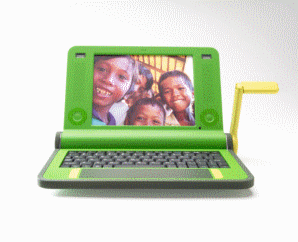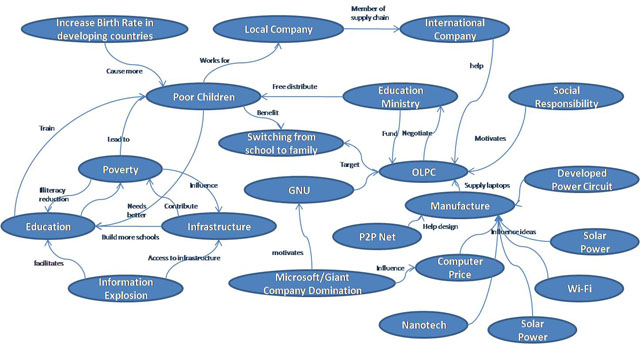Difference between revisions of "The future of the $100 laptop in 2017"
Lovelyxinxin (talk | contribs) |
Lovelyxinxin (talk | contribs) |
||
| Line 51: | Line 51: | ||
* [[What is the alternative for education?]] | * [[What is the alternative for education?]] | ||
What is the $100 Laptop, really? | |||
* [[What is the $100 Laptop, really?]] | |||
Is this project really about getting computers to kids? | Is this project really about getting computers to kids? | ||
Revision as of 21:56, 20 March 2007
Introduction
|
|
The "$100 laptop" is a more popular name for a project set up by One Laptop per Child (OLPC) association. The $100 laptop was a result of research initiative by MIT Media Lab in January 2005 in its effort to create a technology that will revolutionise child education in the world.
One Laptop per Child (OLPC) is a non-profit organisation that was established to achieve its goal. It is independent of MIT and is strongly sending the message to the world that this is not a laptop project but an education project.
Children in rural areas--especialy in developing countries--have very little, if not deprived of, access to school. The conventional solution to this issue is to build a school and train teachers. But it is perhaps the slowest way. OLPC is a breakthrough that will give the rights to education to these children.
At the end of November 2006, the $100 laptop was proudly presented to the public. Despite the price and the intended users, the machine boasts a remarkable complete sets of software that helps broaden the mind and creativity of a child. This was made possible by the strong support of open-source community in building this system so that the price can be kept low.
Our research is to study the future of this education project in 2017 considering various driving forces from technological to socio-political aspects. The motivation behind this research choice is the noble and excellent idea of this project as well as the technology applications in it.
Aki - updated Thursday, 15 March 2007 5:23 PM
Research Questions
Click here for our Our Research Questions
Driving Forces
- Political & Social Forces
- Economic Forces
- Science & Technology Forces
- Resource & Environment Forces
- Population & Demographic Forces
Diagrams
Scenarios
Frequently Asked Questions
Is this project really about getting computers to kids?
The answer is an unequivocal yes! But it doesn't stop there. We also want to get millions of textbooks to kids and give them an excellent education as well. This is an education project, not a laptop project.
Child is a nebulous term; what is the exact age range you are targeting? We are hoping to reach elementary and secondary-school-age children: ages 6 to 18 years.
References
Related Links
<pagerating from="Bad" to="Good" category="Scenario">Rate this page</pagerating>


